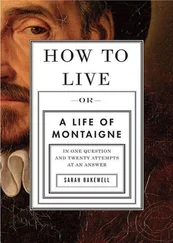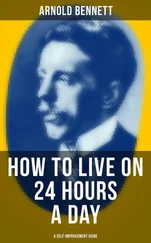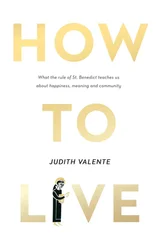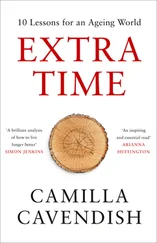This sounds a good deal like the community Benedict sought to create, and the one he entrusts us to build today. He foresaw the dangers of radical self-interest of the kind that led to the economic meltdown of 2008 and to the Great Depression (as well as other economic crises before and since then), to practices like slavery and apartheid, and to so many of the world’s wars. No one is to pursue what he judges better for himself to the detriment of others. This Benedict counseled nearly two millennia before oxytocin was even discovered.
The Rule also has a message for those of us on call twenty-four seven, swirling in a maelstrom of email, texting, Twitter, and Snapchat. It beckons as a plea for balance. Benedict carved the monastic day into distinct periods for work, prayer, reading, leisure, and rest. He believed there is a time to work, and a time to stop work. As someone who has long suffered from a dual diagnosis of workaholic and overachieverism, The Rule showed me that it is possible to pause, to care for myself, and still be productive. With its focus on balance, The Rule helps orient my attention toward the sacred in the ordinary. It propels me to live every day.
In many ways, Benedict and his predecessors—the early monastics of the Egyptian desert—were among history’s first psychologists. They understood that in order to live in community—or even as hermits—they would have to confront the emotional demons that haunt us all. They discovered ways to leaven our natural tendencies toward anger, self-absorption, greed, depression, unhealthy appetites, and obsessions. They did this not by repressing those tendencies, but by recognizing we are not our thoughts and we are not our feelings. We can redirect our thoughts and feelings into constructive actions. Doing this allows us to confront life’s inevitable turbulence with equanimity. The emotional tools that The Rule lays out have been more valuable to me than any self-help book or therapy session.
The reflections in the pages that follow are my attempts to draw out the major themes of The Rule in practical takeaways that can lead to personal transformation. For many centuries, men and women who entered monasteries were expected to memorize The Rule in the same way they committed to memory the Psalms or traditional prayers. But as the Benedictine writer Mary Margaret Funk points out, The Rule is not something to be absorbed intellectually. It has to be lived. It has to take up residence in our inner life.
“Benedict’s great insight,” she writes in her memoir Out of the Depths, “was that the work of the monastery was not simply about men and women living apart from society in a community. The true work lay in how one developed the interior life.”
The happy news is that this also applies to people who don’t live in monasteries—people like you and me who are trying to nurture a family, succeed in a rapidly changing workplace, and grow old with a sense of purpose. The true monastic enclosure is the human heart.
While there is still time, while we are in this body and have time to accomplish all these things, let us run and do now what will profit us forever.
—FROM THE PROLOGUE
Happily too, St. Benedict promises to demand of us nothing harsh, nothing burdensome. He reminds us we are always only beginners on the path to a deeper interior life. The spiritual journey is not a flight on a supersonic jet, but a slow steady trek, like hiking the Appalachian Trail or walking El Camino de Santiago de Compostela. “The spiritual life is this,” a monastic elder from the Egyptian desert once said, “I rise and I fall. I rise and I fall.”
I used to think of monastic life as a hopeless throwback to the past, a case of let the last monk or sister standing turn out the lights. Now I look upon it as a window to the future we desperately need in our society: one that stresses community over competition, consensus over conflict, simplicity over self-gain, and silence over the constant chatter and distractions of our lives. And so we begin.
Is there anyone here who yearns for life and desires to see good days?
2
LISTEN WITH THE EAR OF THE HEART
On Paying Attention
Listen carefully my daughter, my son to my instructions and attend to them with the ear of your heart. This is advice from one who loves you; welcome it and faithfully put it into practice.
—FROM THE PROLOGUE
A few years ago, I had the opportunity to report on a talk that Supreme Court Justice Sonia Sotomayor gave to University of Illinois law students. It was not long after the sudden death of her colleague on the court, Justice Antonin Scalia. Scalia often sparred with Sotomayor and the other judges of the court’s so-called “progressive” wing. In one of his more colorful opinions, he accused opposing justices of engaging in the “jiggery-pokery” of devious behavior. He derided another majority opinion, of which Sotomayor was a part, as the equivalent of legal “applesauce.”
For her part, Sotomayor described Scalia as “the brother I loved, and sometimes wanted to kill.” How then, asked one of the law students, did the justices engage in these intense disagreements and still manage to collaborate? Sotomayor gave a very Benedictine answer. They listen to one another.
“You may not like what they’re proposing, but that doesn’t mean they’re doing it from an evil motive,” she said of her fellow jurists. Justices can passionately disagree, she said, “and still see the goodness in one another.” She offered a recommendation for dealing with professional—and personal—divisions. Less talking, more listening.
I’ve often marveled, that the first word of The Rule of St. Benedict isn’t pray, worship, or even love. It’s listen . This small, unobtrusive word speaks in a whisper. To anyone who studies Benedictine spirituality, the phrase listen … with the ear of the heart becomes so familiar we can easily lose sight of how revolutionary it is. Listening in the Benedictine sense is not a passive mission. Benedict tells us we must attend to listening. In some translations of The Rule , we are to actively incline ourselves toward it, and nurture it in our everyday activities. Listening is an act of will.
When I look at the failures and disappointments in my own life, I can often trace them to an operator error in listening—usually my own. Even though I earn my living as a journalist—which is to say I listen to other people’s stories for a living—in my private life I’m often like the doctor who is her own worst patient. I’m great at hearing my heart’s desire, but not so adept at hearing the messages I need to receive from others.
Perhaps it comes from being the youngest in my family and having had to fight to be heard. I am also a person of strong opinions. That too can be a prescription for tone-deafness. Once, a colleague whom I respect called me on a Saturday morning to tell me he thought I can come across too forcefully at staff meetings. My initial reaction: ridiculous! My second reaction was anger that someone I considered a friend would engage in what I felt was a personal attack.
Then I started listening with the ear of my heart. I mentally replayed the tapes of some recent meetings where I had voiced my opinion. I heard my own voice. I could see that what I might consider passionately advocating for a position, others might find argumentative and condescending.
A friend who is a counselor once suggested that when my husband and I disagree on something, instead of repeatedly hammering at our individual opinions, we might stop and each repeat to the other what he or she has said, ending with the question, “Am I understanding you correctly?” It’s amazing how many times I have to repeat what my husband has said before I get it right, and he must do the same. We listen through the echo chamber of our own perceptions. The Benedictine Rule calls us to not only listen, but to actually hear.
Читать дальше












